After the goalless first leg that took place in February, Milan welcomed Lazio for the second game of the Coppa Italia semi-finals. Since then, both teams have played with a lot of oscillations in their game and they are both in the running for fourth place in Serie A that guarantees Champions League football for next season.
I Rossoneri tried to dominate the pitch with possession and to beat their opponent with a passing style, but they struggled to perform due to the great defensive organisation and transitions of the away team. This tactical analysis will show you how Lazio managed to beat Milan with their steady play and good transformations from defence to attack.
Lineups
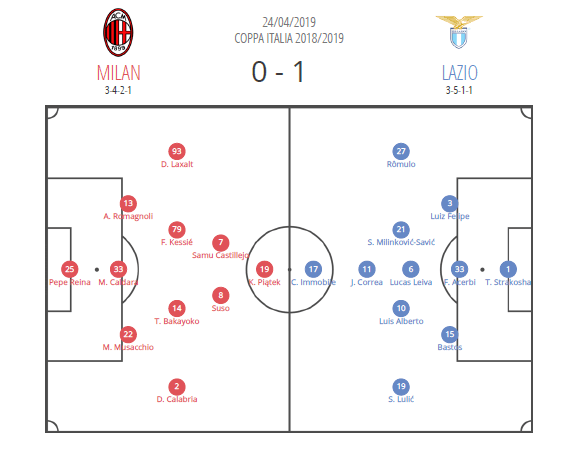
Both teams went into the game with formations that play with three players in the back. Milan started the game in a 3-4-3 formation, relying mostly on their attacking trio that was made up of Krzysztof Piątek, Samu Castillejo and Suso, who was their main attacking force. The midfield was held by Tiémoué Bakayoko and Franck Kessié who provided support for their attackers and were in charge of building play from the back.
Inzaghi’s team modified the same formation and turned it into a 3-5-2 at the start of their attacks which in later phases of attacks transformed to 3-4-1-2 or even 3-4-3. They tried to get create chances through the pacey Joaquín Correa who had a great companion in Cirro Immobile who was in-form in this game. Since Sergej Milinković-Savić got injured in the 15th minute of the match, Marco Parolo came in for him. He and Luis Alberto needed to fill his shoes for the attacking support duties.
Lazio made Milan’s wings harmless
The visitors’ defensive structure was the best we could see in a match that wasn’t as interesting as had been expected. Milan tried to take control of the tempo with possessional play but they didn’t succeed in their intentions because of Lazio’s good defensive block and dense organisation.
The main problem for Milan was that their wingers weren’t getting the ball in the dangerous zones of the pitch. They were pressured to move lower and to take part in the organisation of the attacks by the Eagles’ good positioning.
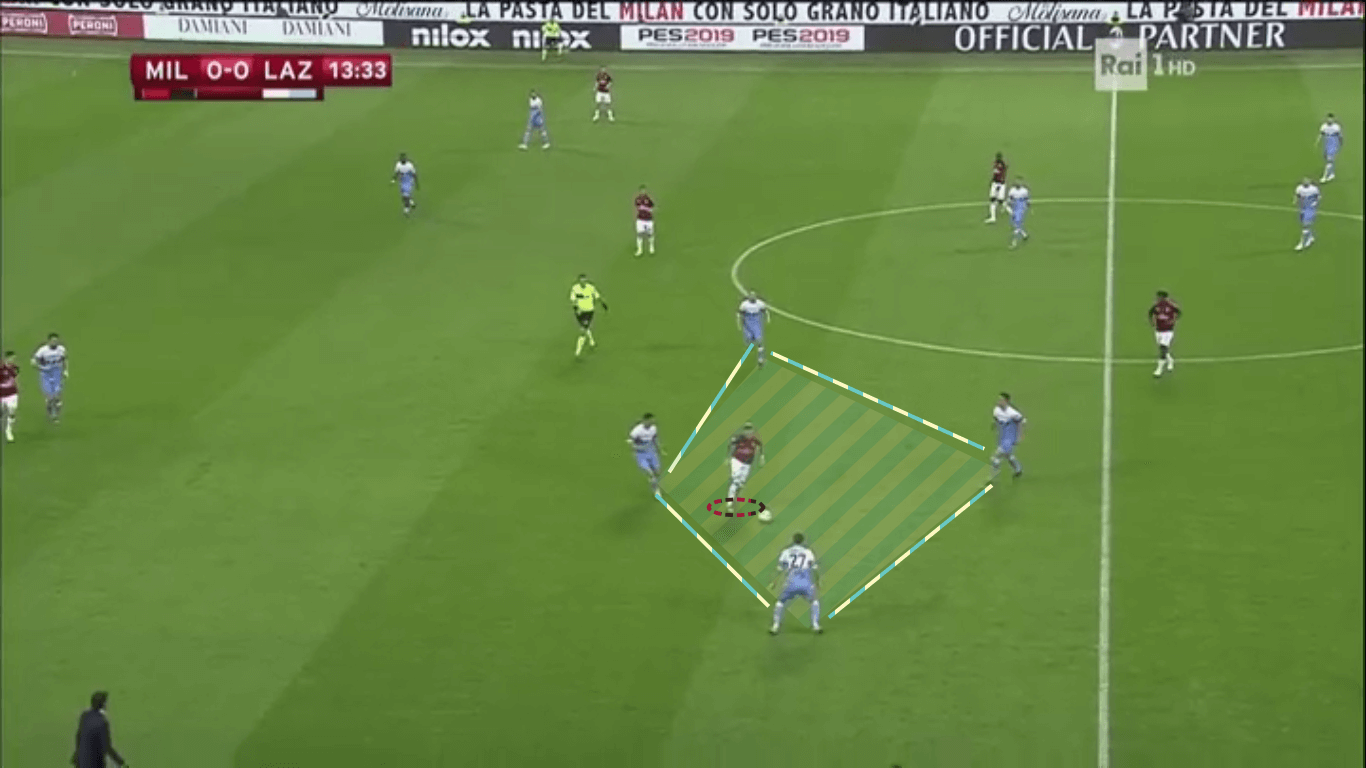
In the picture above, we can see the away team guiding Castillejo into their trap and pushing him away from his position so he can’t be a goal threat. Lazio transformed their block very well, as the midfielders played a huge part in getting the ball from Milan’s players in the central and inner corridors of their own half.
Their defensive structure was tight and central-oriented with the focus on the home team’s creative players, who were prevented from dictating play. Leiva provided very good support to both Luis Alberto and Parolo, and they managed to prevent Gattuso’s players from progressing through the middle easily.
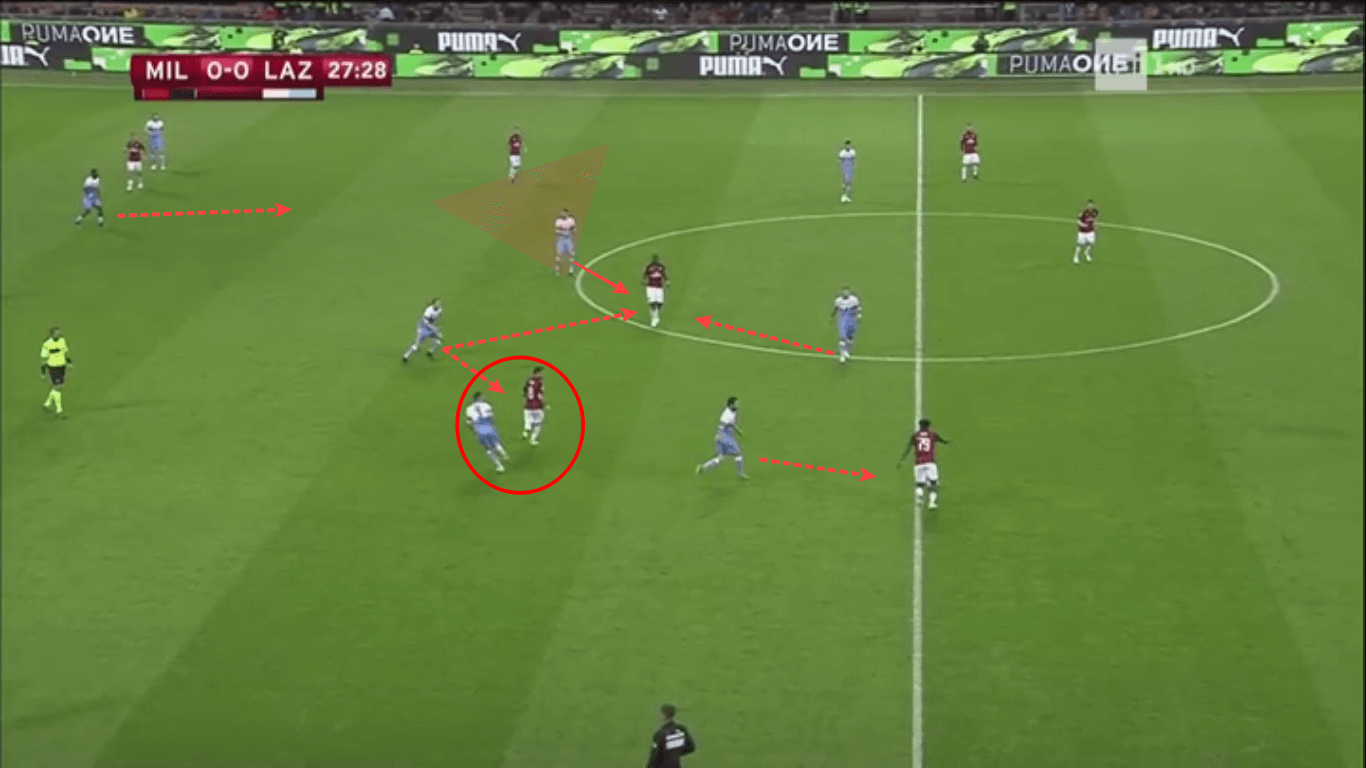
They pushed the most dangerous Rossoneri player, Suso, too far from the zones from which he can cause trouble. He was forced to take part in the build-up and was often in the same place as his defensive midfielders.
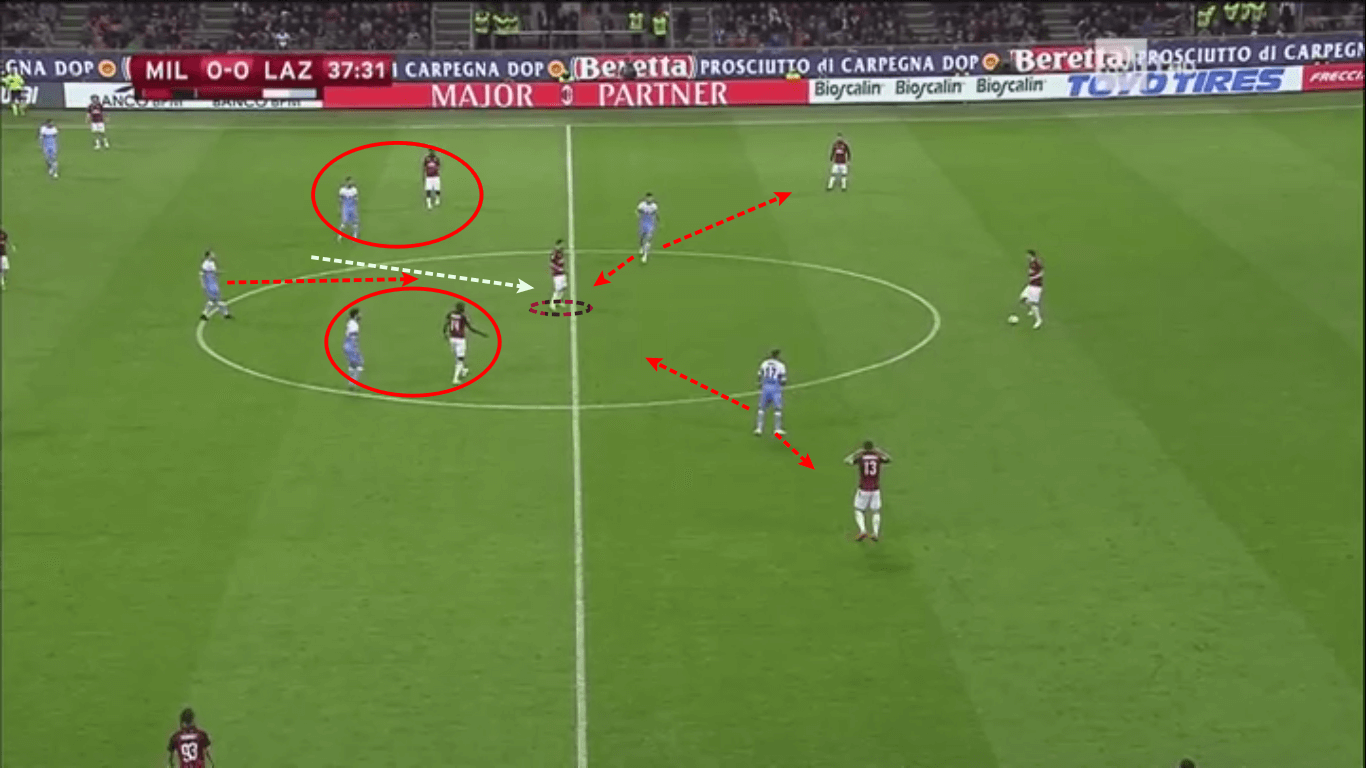
The Eagles’ midfield forced Milan’s play to the flanks, which made also the Spanish wingers get in possession of the ball very low on the pitch and next to the sidelines. Their good organisation was dense enough to cut the passing lanes through the lines and to make their opponents pass around their block with no ideas on how to threaten the defence.
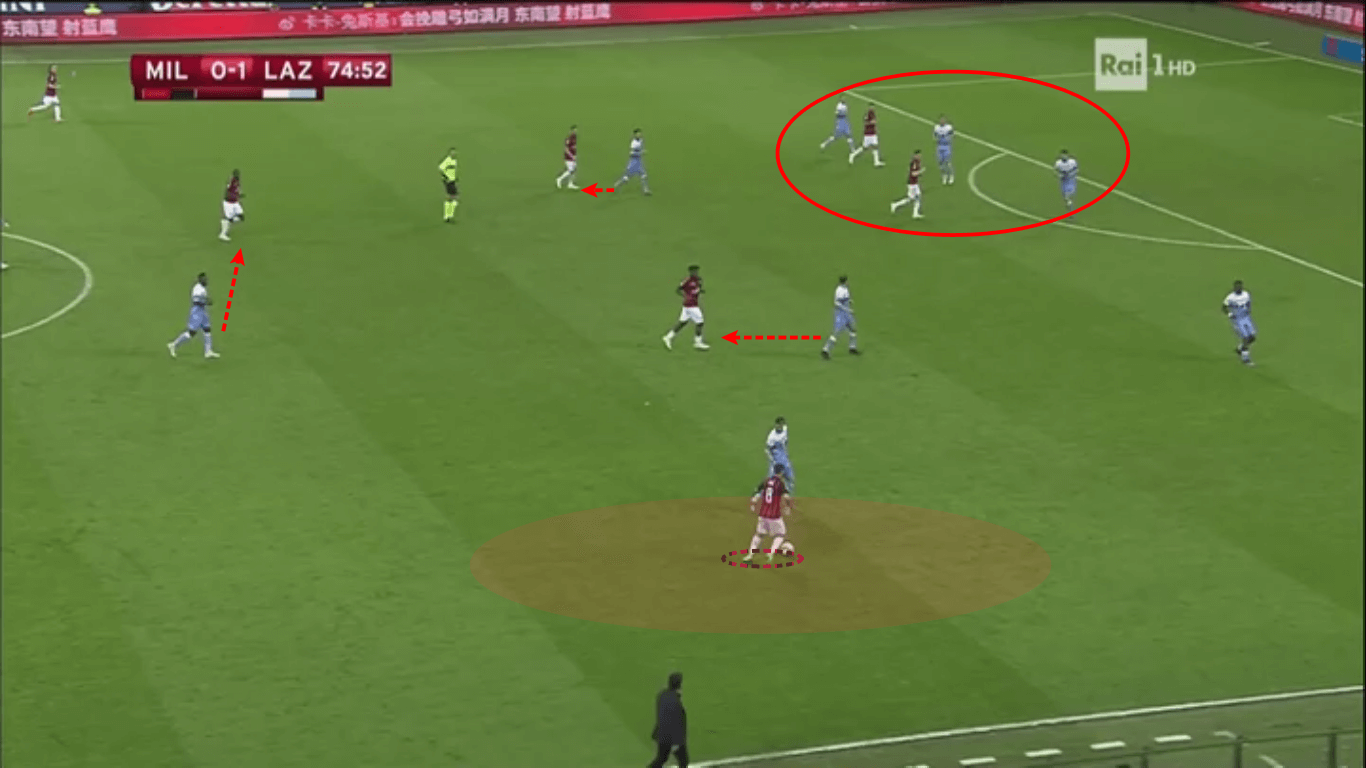
Lazio’s strong transition
Out of good defence, Lazio created a lot of chances through transitional attacks. They managed to make their opponent struggle and even though they didn’t hold that much of the ball, they dictated the tempo of the play with their defensive movements.
They tended to push the host’s attackers lower down the pitch and to orient their pressing to the deep balls through the lines. They won a lot of balls in the middle of the pitch, especially in the central and inner corridor when they drew Piątek, Suso and Castillejo closer to their midfielders in order to get the ball.
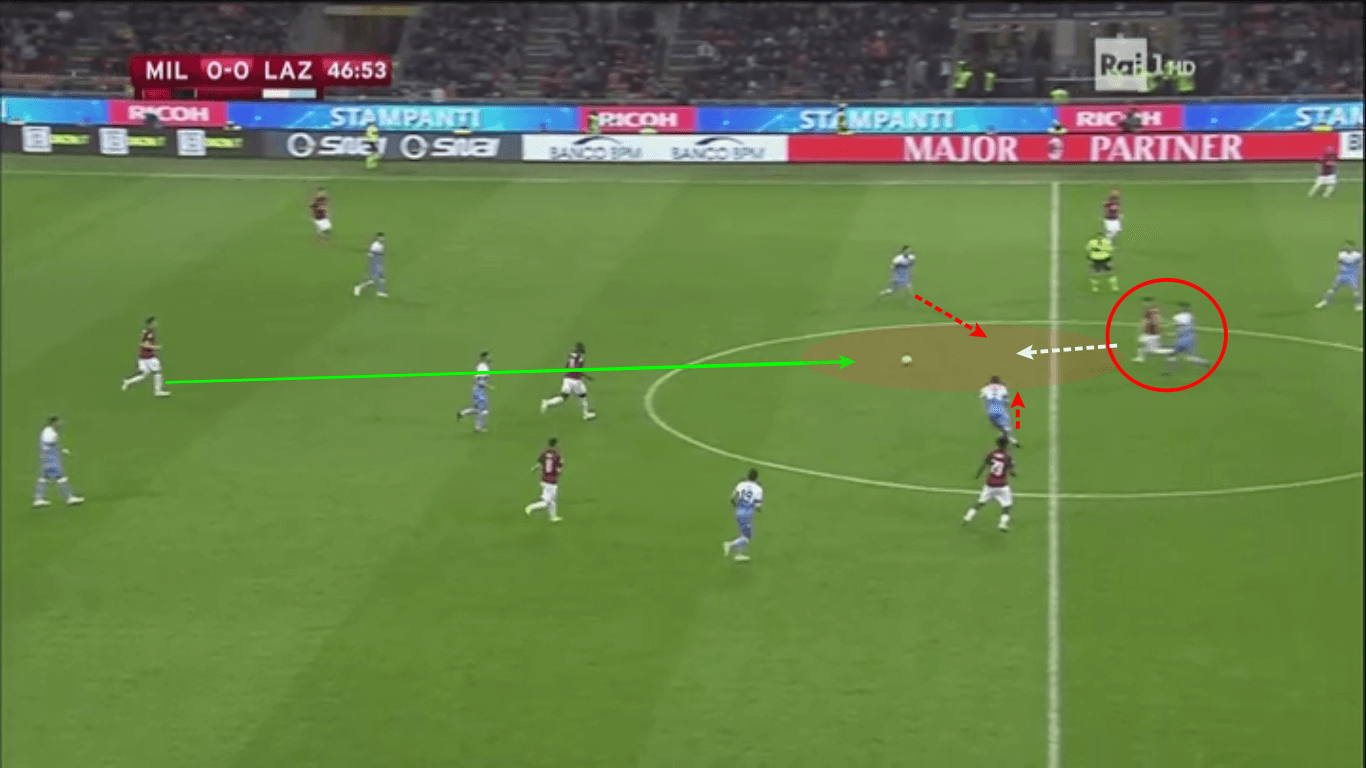
As we can see, Inzaghi’s team let the opposition pass through their lines in some situations but only if it was part of their plan. Pulling Piątek to the centre was lucrative for them because he was too far from the final third and he was always surrounded by three or four Lazio players who got to the ball in those situations with ease.
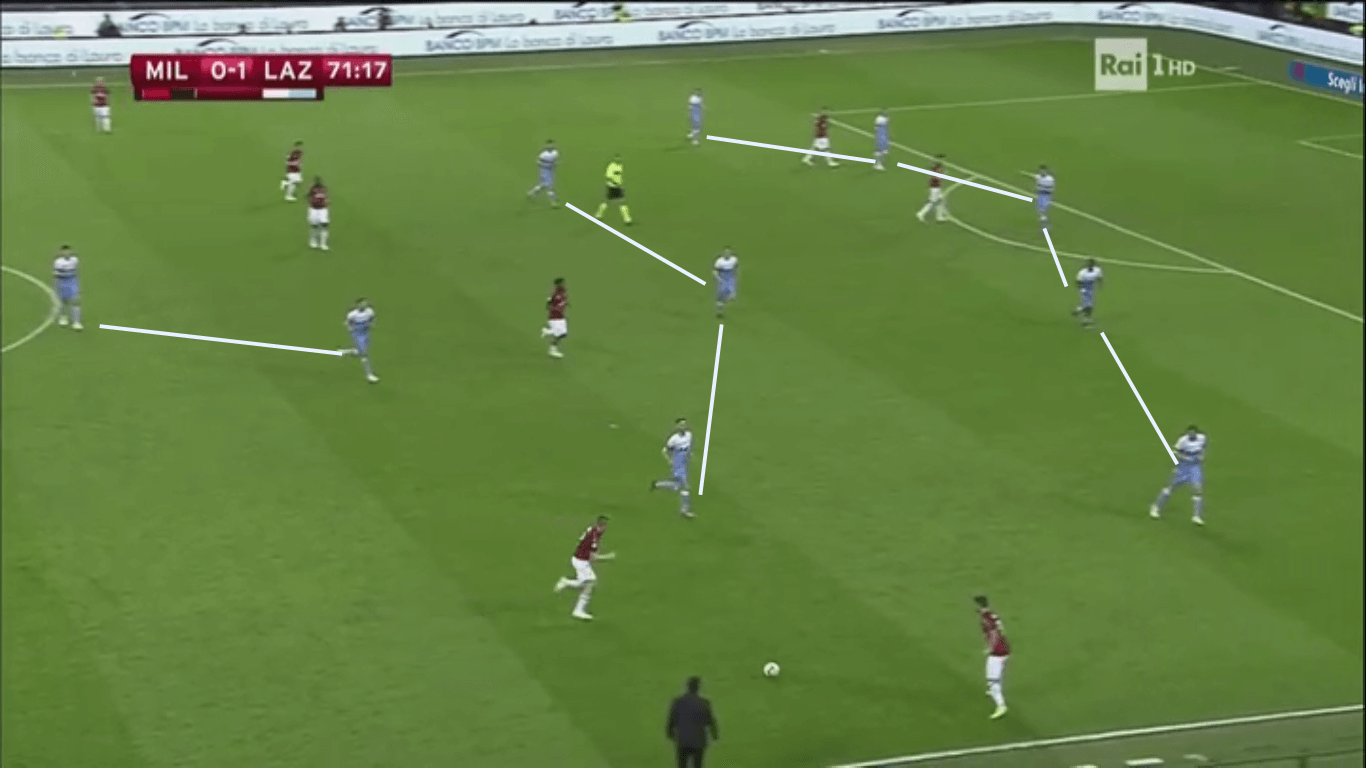
From their good defensive setting, the away team went into their counter-attacks. They were very good in transitions, which hugely relied on Correa’s pace. The Argentinean gave a lot of trouble to his markers since he often drew himself out to the flanks in order to get more free space in front of him.
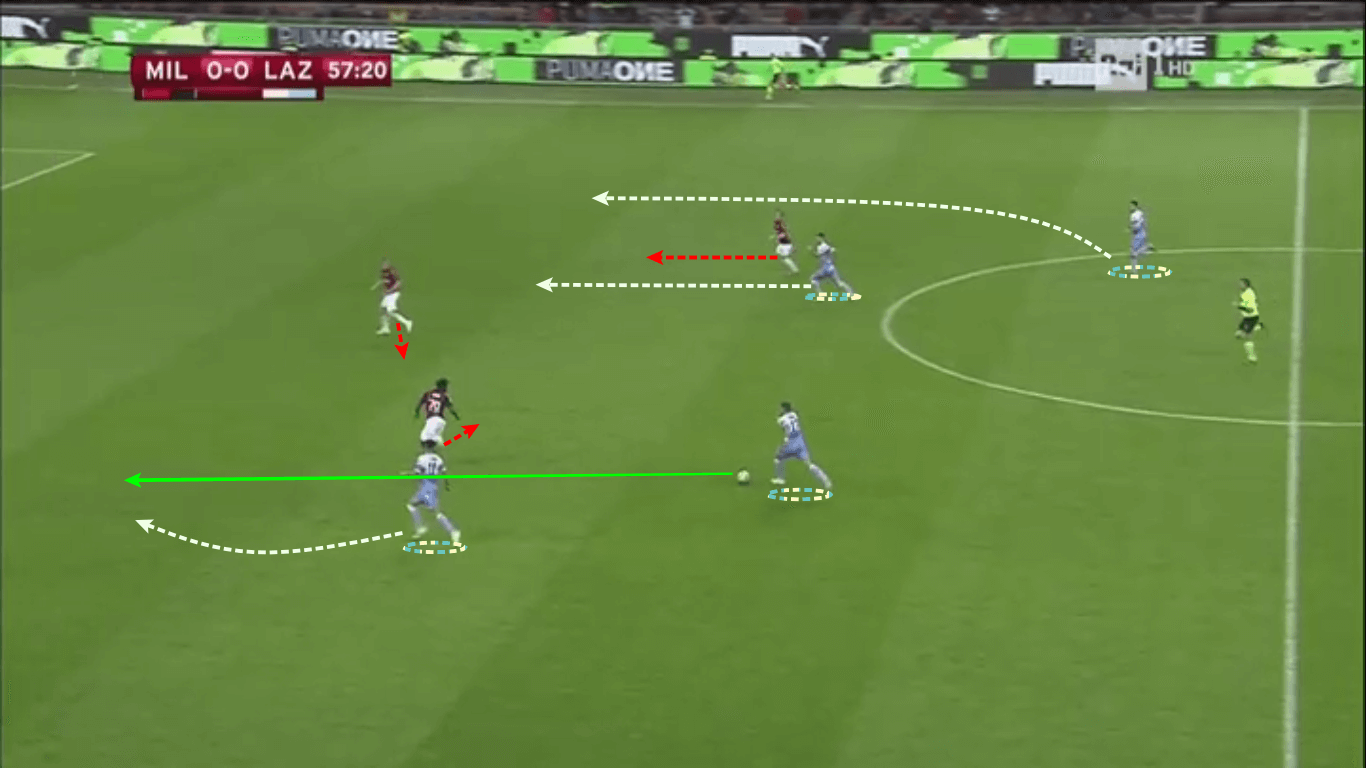
One of those actions paid off for Lazio and they scored a goal that led them to the final of the Coppa Italia. They transformed from their defensive shape into their attacking shape very fast, and that created a lot of good goalscoring opportunities for them.
After they got the one goal advantage, they controlled the situation onthe pitch entirely, preventing Milan from playing their game with their good defensive organisation. Inzaghi’s players continued to be dangerous on the counter, while Pepe Reina saved his team from a heavier defeat.
Attackers’ link-up play
One of the main differences of the pitch was created by Lazio’s strikers, mostly Immobile, who played a huge role in linking the lines and providing good progression of the ball through the zones. Italian striker created a lot of chances for his team, both with his movement and with his passes, and he was very hard for his opponents to mark.
Immobile tended to position himself on the side that was held by Musacchio and Caldara, rather than next to Romagnoli. He sensed that he had a pace and agility advantage over those two centre-backs and exploited it to make space and opportunities for his team.
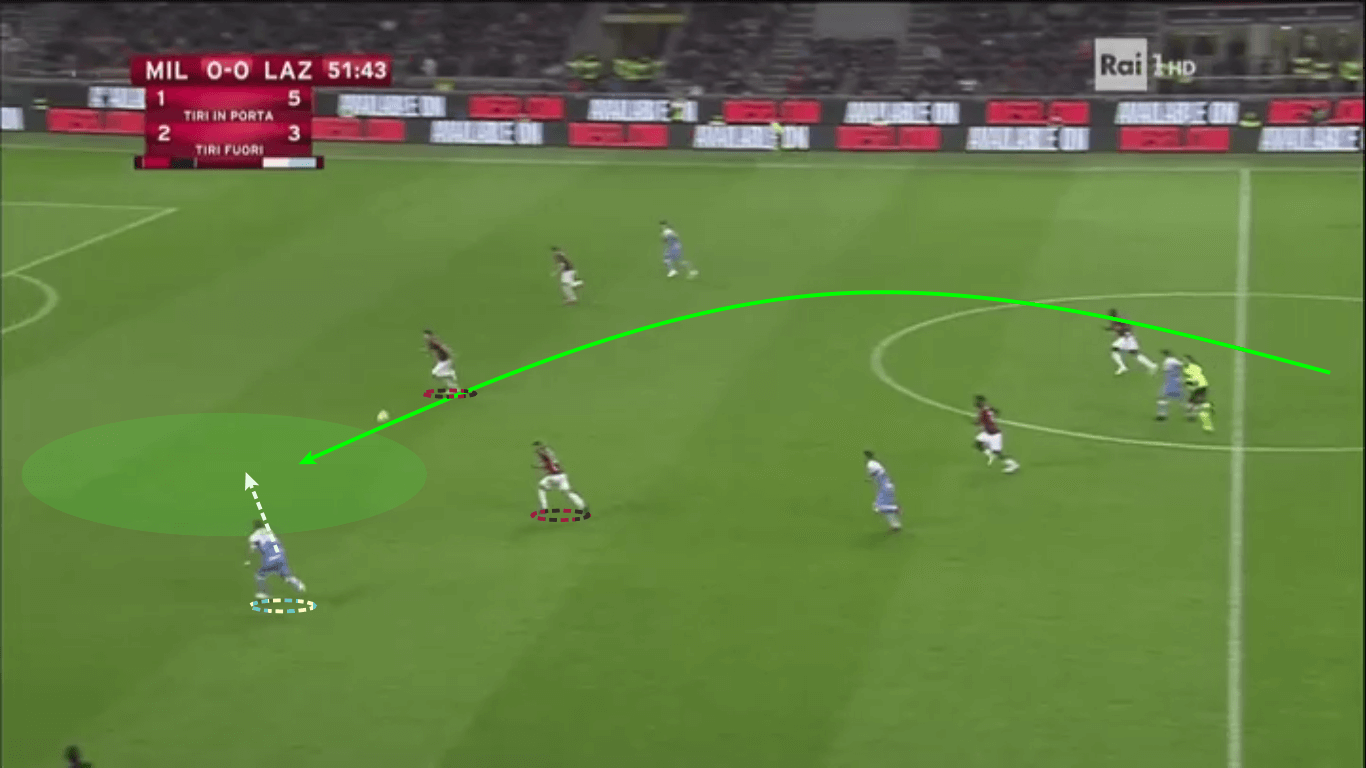
The striker often pulled himself to the flanks so that he wouldn’t have a marker next to him, and so that he could have more room when he received the ball. His positioning confused Milan’s centre-backs, leaving lots of free space for him to run into.
Lazio’s number 17 continued with his dropping back, but also in order to link up his lines and to provide chances. He always locked himself to more than one defender which created a numerical advantage for his team-mates in some other parts of the pitch.
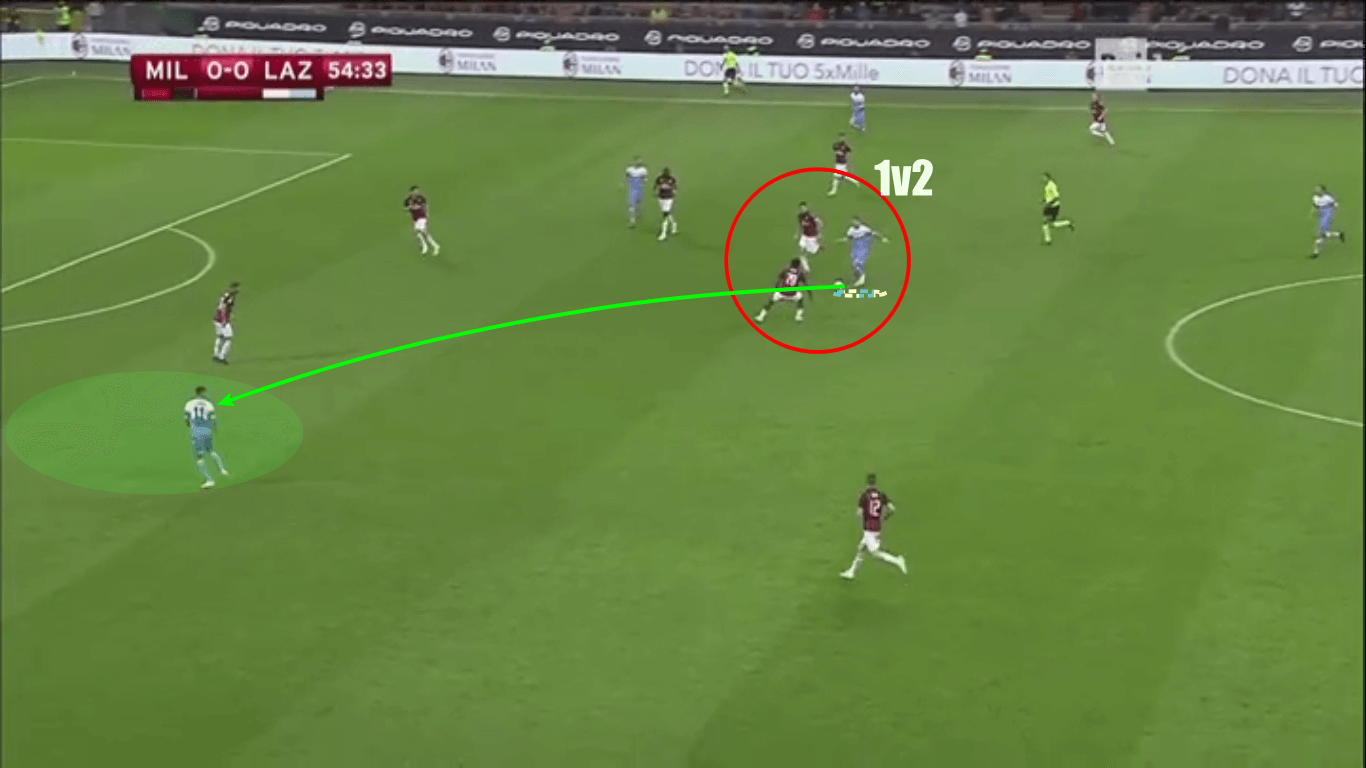
Immobile played an important role in chance creation since he broke Milan’s lines in the final third with his passing and movement. Correa hugely exploited the room that was left free due to the Italian striker’s occupation of defenders, and missed a few one-on-one situations with Reina.
Lazio’s main striker also pulled himself in the half-spaces using space that was empty due to the bad organisation of Milan‘s defensive block. He got a lot of balls in the gaps between the defenders and midfielders which he turned into dangerous attacks for his side.
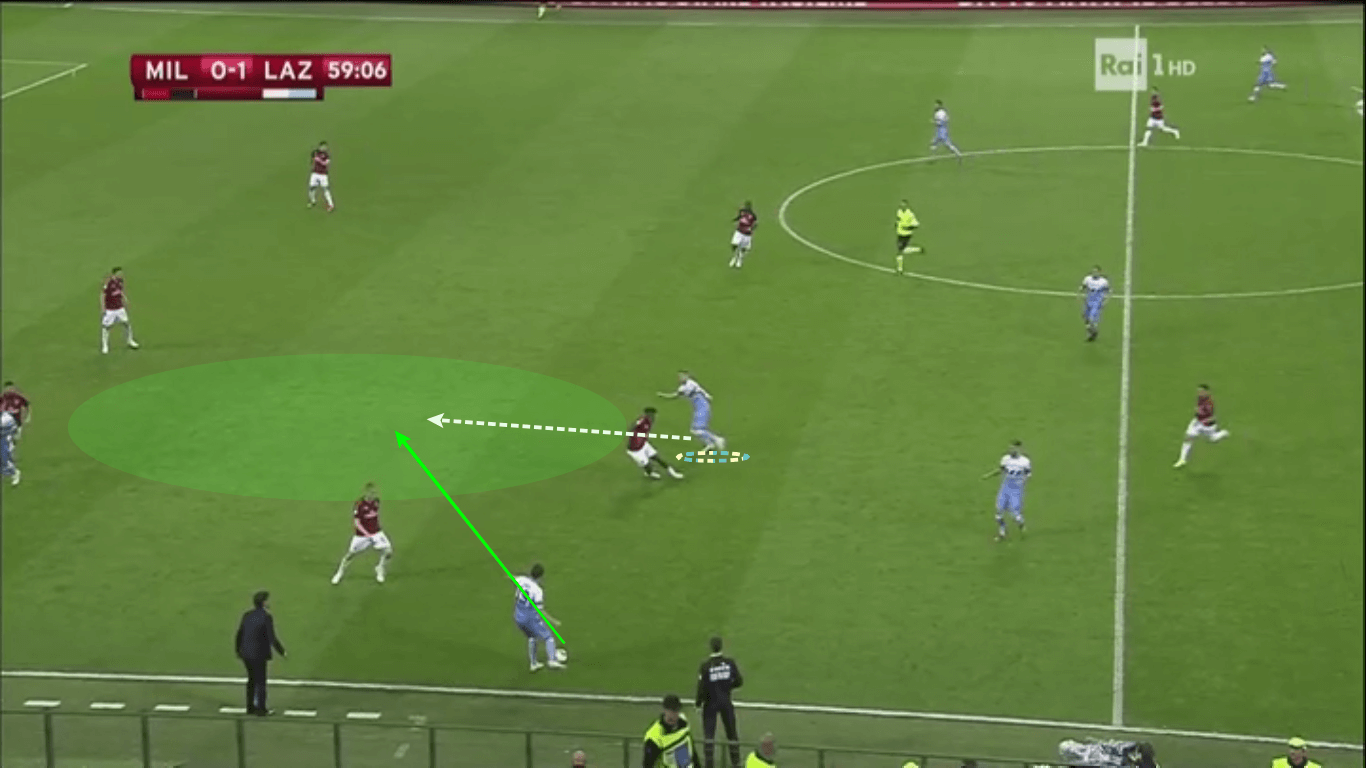
Conclusion
The Eagles won the game with their good transitions and disciplined defending, and also due to the good role of their lead striker Ciro Immobile. Inzaghi planned the game very well and closed the inside corridors for his opponent which broke Milan’s game apart.
In a match that was pretty physical and not that inspiring, the away team succeeded in their intentions of narrowing the pitch for their opponents, which led them to the final of the domestic cup. I Rossoneri struggled to perform and to find gaps in the Romans’ good defensive structure, so Lazio truly deserved the win.
If you love tactical analysis, then you’ll love the digital magazines from totalfootballanalysis.com – a guaranteed 100+ pages of pure tactical analysis covering topics from the Premier League, Serie A, La Liga, Bundesliga and many, many more. Buy your copy of the April issue for just ₤4.99 here, or even better sign up for a ₤50 annual membership (12 monthly issues plus the annual review) right here.

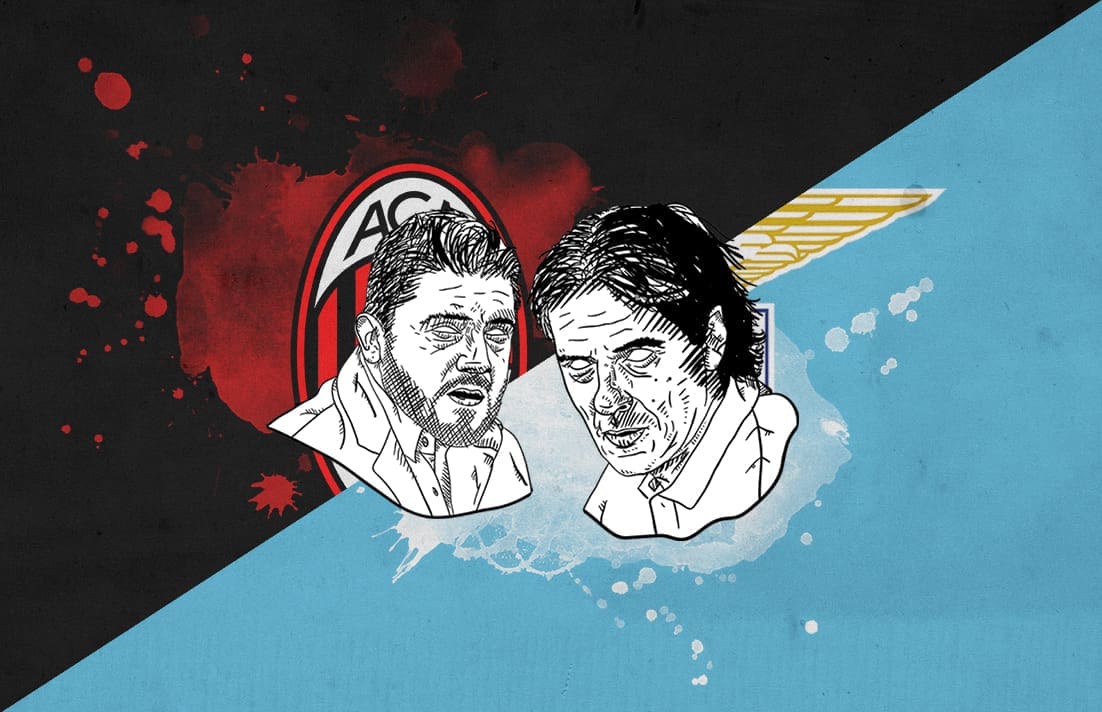


Comments